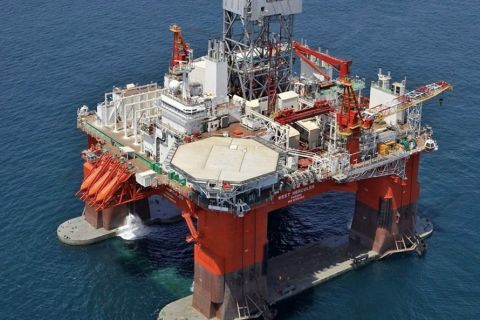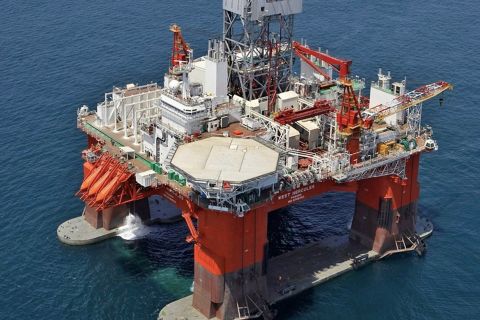Hart Energy:
We're going to talk about E&P trends in 2019. A lot to discuss here. Let's start with the shale efficiency gains. What did you see there?
Velda Addison:
That has been a continued trend we have seen from oil and gas companies in shale plays. They've been doing a lot in the area of improving efficiency, especially in drilling and completions. So, oil and gas companies working with oilfield service companies, they've been reducing the number of days it takes to drill a well. They've been using more zipper fracs and they've been cutting down on non-productive time.
Hart Energy:
What does that mean for oil and gas companies that have been struggling to grow profits?
Velda Addison:
It means they are cutting their well costs and that is a good thing. It also means they are using [fewer] rigs. They are able to drill more wells with fewer rigs and that cuts down on cost and they're also able to produce more oil and gas should they choose to do so. Analysts at Rystad Energy recently discussed some of the D&C trends that we've been seeing particularly in shale plays like the Permian Basin and Eagle Ford and Marcellus. They noted some areas where oil and gas companies have been doing a pretty good job at improving some of these efficiencies. If we want to look at some of those that Rystad pointed out. There was a 22% improvement in the number of drilling days per 1000 feet in the Permian's Midland sub-basin and there was also a 22% improvement in the Marcellus as well. As far as zipper frac penetrations there was a 31% improvement seen in the Permian's Delaware sub-basin.
Hart Energy:
Let's talk about attention on ESG.
Velda Addison:
There's been more focus on environmental, social and governance and more sustainable business practices and this has put the spotlight more on flaring particularly in the Permian Basin. It's been a big problem there. Again, analysts at Rystad studied this and found that in a third-quarter flaring and venting of natural gas actually reached a new all-time high for the Permian Basin. It jumped to an average of more than 750 million cubic feet per day in the third quarter.
Hart Energy:
What has been happening offshore?
Velda Addison:
The offshore sector continues to rebound and oil and gas companies have been bringing down their breakevens and a key to their success has been utilizing existing infrastructure and subsea tiebacks, which makes their offshore projects more economic. Companies have also been carrying out infrastructure-led exploration programs. That's essentially exploring near where they've already found oil and gas and using seismic data. Hess Corp., for example, made a discovery with [its] Esox-1 well in the U.S. GoM earlier this year. That's located near the Tubular Bells facility.
Hart Energy:
Velda, what about production? How is that going?
Velda Addison:
Production in the Gulf of Mexico is increasing too and that's also good news. The U.S. Energy Information Administration is forecasting that oil production could hit a new record for the Gulf of Mexico this year. It could hit an average of 1.9 million barrels per day this year and it could rise to 2 million barrels per day next year and this is up from 1.8 million barrels in 2018. The EIA also said that by the end of the year eight new deepwater projects would have started up and next year we're looking to see at least four more.
2019 E&P Highlights:
- Analysts Forecast Drop In US Shale Activity, Rise In Efficiency
- XTO Energy: Room To Run In US Unconventionals
- Shale Players Search For 'Happy Median' In Permian Basin, Eagle Ford
- Key Players: Shale Growth Slows For Top US Operators
- Problem Child
- Report Shows More Unconventional Potential In Anadarko Basin
- US GoM Oil Production Moves Toward Another Record
- Exxon Mobil-led Consortium Strikes Oil Again Offshore Guyana
- BP Green Lights $1.3 Billion GoM Project
- Cowboys Owner Jerry Jones Has Long-term Game Plan For Haynesville Gas
Recommended Reading
Sinopec Brings West Sichuan Gas Field Onstream
2024-03-14 - The 100 Bcm sour gas onshore field, West Sichuan Gas Field, is expected to produce 2 Bcm per year.
Orange Basin Serves Up More Light Oil
2024-03-15 - Galp’s Mopane-2X exploration well offshore Namibia found a significant column of hydrocarbons, and the operator is assessing commerciality of the discovery.
Second Light Oil Discovery in Mopane-1X Well
2024-01-26 - Galp Energia's Avo-2 target in the Mopane-1X well offshore Namibia delivers second significant column of light oil.
CEO: Continental Adds Midland Basin Acreage, Explores Woodford, Barnett
2024-04-11 - Continental Resources is adding leases in Midland and Ector counties, Texas, as the private E&P hunts for drilling locations to explore. Continental is also testing deeper Barnett and Woodford intervals across its Permian footprint, CEO Doug Lawler said in an exclusive interview.




